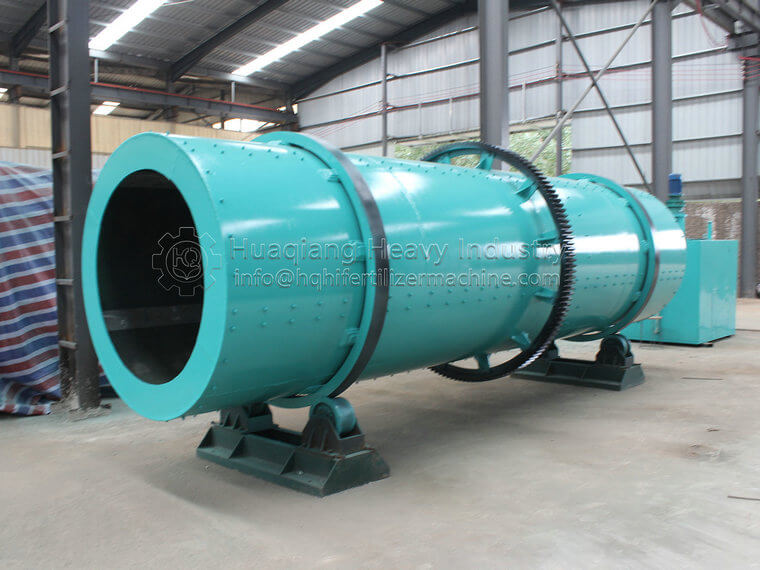The Role of Organic Fertilizer Dryer in Granular Fertilizer Production Line
As we all know, the production of organic fertilizer requires the use of organic fertilizer granulators, such as roller granulator, tooth stirring granulator, disc granulator machine, new organic fertilizer granulator, npk fertilizer granulator, etc, but the production granular organic fertilizer dryer is also very important, especially in the wet granulation fertilizer production line, the dryer is very helpful for drying fertilizer granules, and the raw material of the wet granulation equipment is always high in water content. Before granulation, the material is always dewatered by about 30% with a solid-liquid separator. But this value is not suitable for the final particle. In order to make the particle structure more compact and increase its hardness, a dryer is required. Once dry, the transport and storage of fertilizer granules is much easier.

Features of organic fertilizer rotary drum dryer:
1. High degree of mechanization and great working ability. At the same time, it consumes less fuel and does not require manual operation when working. This can greatly reduce the cost of hiring operators.
2. Our drum dryer has good high temperature resistance characteristics, which ensures fast drying of fertilizers and materials. This dryer is much taller than conventional dryers.
3. The distribution and angle design of the lifting plate is very reasonable, which makes the performance of the machine more reliable and stable. Therefore, it greatly improves the utilization rate of thermal energy and reduces the frequency of material cleaning.
4. It has good applicability to different fertilizer materials such as poultry manure, livestock, mushrooms, straw powder, sawdust and so on. No matter the material, our rotary dryers can work for you.
5. Our dryer can also sterilize and deodorize fertilizer while drying it. This will not only allow the fertilizer to have the proper amount of moisture, but it will also be used in a better amount.




.jpg)


.jpg)